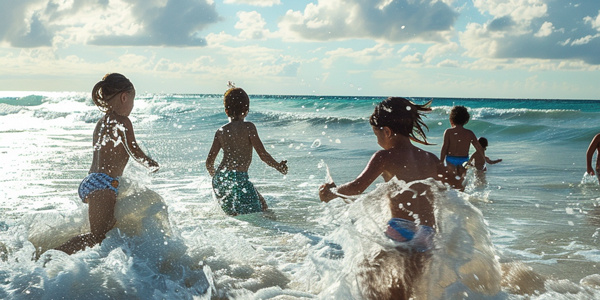DOES YOUR CHILD KNOW THESE 12 WATER SAFETY RULES?
Water play, pool parties, and beach days are some of the many joys of summer. We all crave a refreshing dip when the weather is humid and warm, but...
2 min read
 Streamline Brands
:
Sep 16, 2024 3:51:26 PM
Streamline Brands
:
Sep 16, 2024 3:51:26 PM


Drowning is a leading cause of death among children, a fact that worries many parents. Some may feel tempted to keep their kids away from the water out of fear, but that approach doesn’t solve the problem. Instead, it’s important to teach children the skills and knowledge they need to be safe in and around the water.
Discussing serious topics like drowning can be tough, but teaching kids water safety is key to protecting them. The goal is to emphasize safety without causing fear. Children should feel confident around water, while also understanding the risks. Here’s how to approach this conversation in a positive and non-scary way.
Tailoring your conversation to their age and level of understanding is important. Explaining water safety rules for kids will be vastly different from discussing it with a teenager.
Water safety shouldn’t be a one-time discussion; it needs to be an ongoing conversation. Repetition is key to helping kids retain information. Here’s how to make it a regular part of your routine:
Remember, the goal of discussing water safety is to make sure your child feels safe and informed, not scared. By discussing water safety in a way that suits their age and doing it regularly, you help them understand why it’s important without causing fear. This will help them enjoy water activities confidently and know how to stay safe.

Water play, pool parties, and beach days are some of the many joys of summer. We all crave a refreshing dip when the weather is humid and warm, but...

Whether you're an experienced swimmer or just learning how to swim, knowing the ins and outs of pool safety is key for a fun and accident-free time...

As summer heats up and the July 4th holiday approaches, it's time to dive into a world of water adventures while keeping safety at the forefront. As...

Visit our Water Safety Blog for expert advice, family tips, and more!